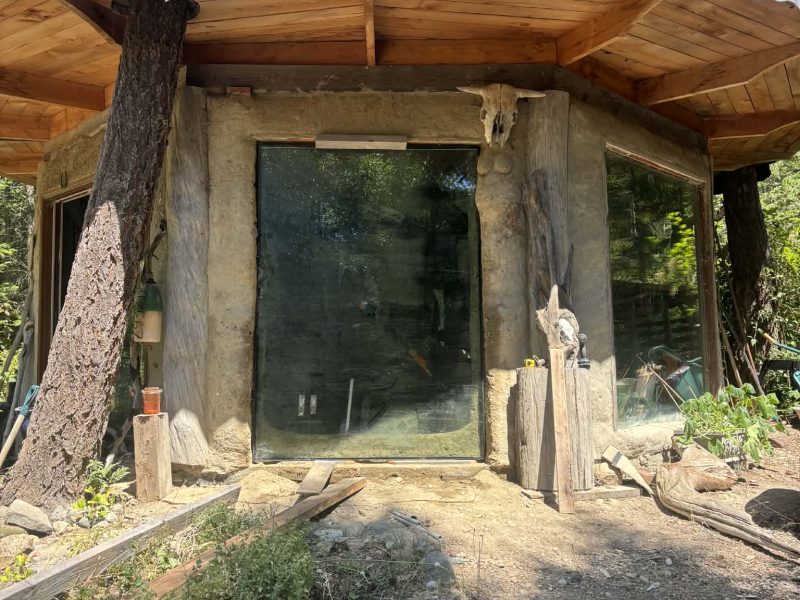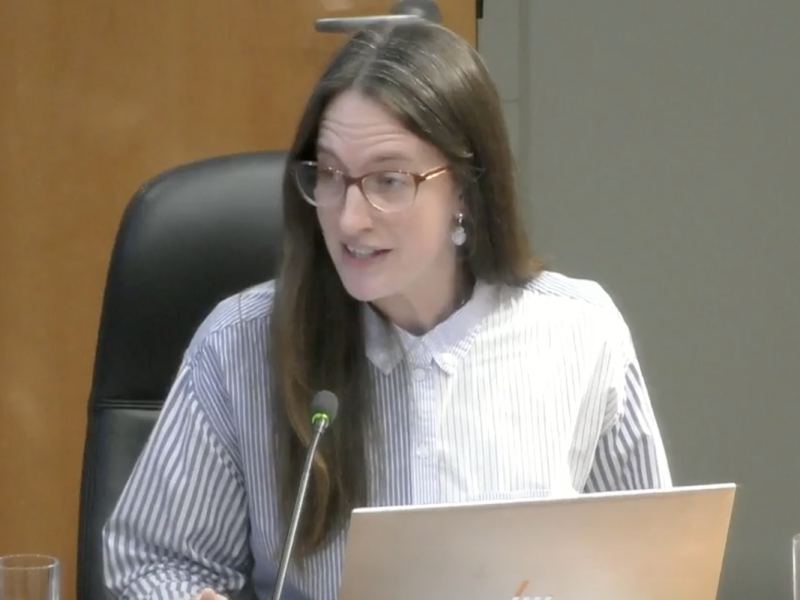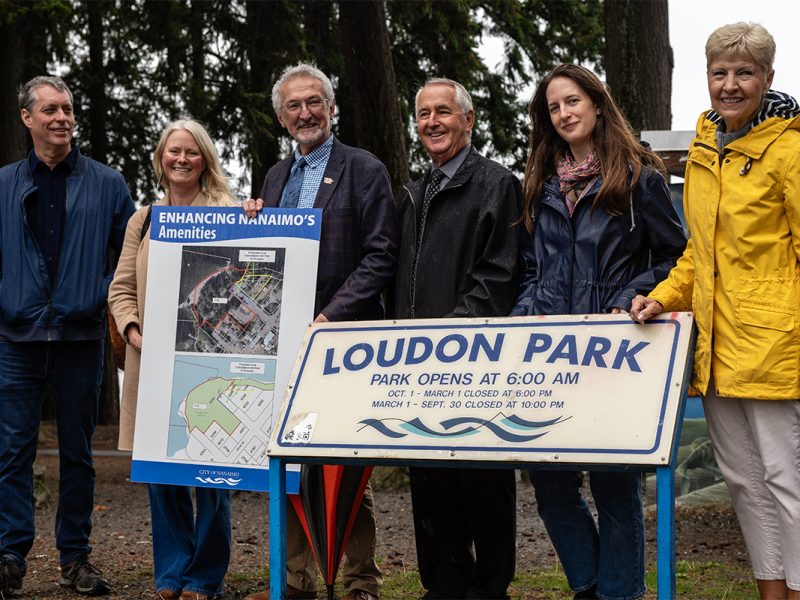
- For decades, environmentalists have called attention to the risks associated with logging and development in local watershed areas.
- Both are permitted in Nanaimo’s watershed because it’s mostly owned and overseen by Mosaic Forest Management Corporation, an affiliation of two large private forest companies, TimberWest and Island Timberlands.
- B.C.’s forestry watchdog recently called attention to the need for more community control over local watersheds in order to protect drinking water.
- The City of Nanaimo says the watershed is relatively well-managed, while Mosaic maintains it meets and sometimes exceeds government standards for watershed protection.
- Moving forward, local First Nations must lead decision-making.
As a longtime Nanaimo resident, activist, documentary filmmaker and until recently, a Green Party member of parliament, the protection of watersheds has long been a topic on Paul Manly’s mind.
It started as far back as 1993, when Manly was busy with issues surrounding Victoria’s drinking water supply. After trespassing into the community’s watershed at Sooke Lake, he documented evidence of soil erosion and turbidity which he says was likely caused by logging in the area, and submitted the footage to local media companies.
“We documented the destruction there and flew over after a heavy rainstorm and you could just see huge plumes of sediment. And at the time, there were boil water advisories in Victoria because of all the cryptosporidium and giardia in the warm water that was being washed in, which would normally be filtered through forests and wetlands,” he says. “Within 10 days of that footage — the exposé I did, I gave it to all the media — there was a moratorium on logging in the watershed, they haven’t logged in the catchment area since.”
Since then, the Capital Regional District (CRD) has adopted an approach to watershed protection that restricts things like public access and chemical use within the area, and utilizes the natural forests, soils and wetlands to filter the water supply.
The CRD has also bought land in the watershed in recent decades from forestry companies with an eye towards drinking water protection. For example, they purchased parcels within the Leech River watershed from TimberWest and Western Forest Products in 2007 and 2010. More recently, they acquired a “high priority” parcel near Grant Lake.
Most of central and southern Vancouver Island is owned and managed by a handful of logging companies, not by the First Nations with title to it or the public. In Nanaimo, the roughly 230 square kilometre drinking watershed is primarily owned and managed by Mosaic, in a partnership between Island Timberlands and TimberWest, though other players are involved, such as the provincial government, Snuneymuxw First Nation and local environmental groups like Nanaimo & Area Land Trust, many of whom volunteer their time to study and protect the watershed.
This land came onto Manly’s radar in the early 2000s, when tree planter Ingmar Lee and others sounded the alarm about the use of fertilizer packets by U.S.-based forestry company Weyerhaeuser in the Nanaimo watershed. Lee and other tree planters claimed the fertilizer had not only adversely affected their health but were contaminated with heavy metals.
In his documentaries Voices of the River and Troubled Water, Manly explored water issues and the problems associated with watersheds that are not publicly owned and protected. When the city spent $72.5 million on a water treatment plant in 2016, Manly asserted it was not only unnecessary (in the sense that an intact watershed is its own natural filtration system) but also more expensive than it would have been to just purchase the land around Nanaimo’s watershed and keep it in public hands.
Today, now that Mosaic has wrapped up its logging of a roughly 20 hectare parcel of forest along the Nanaimo River known as Red Gate, concerns from advocates like Manly and others about the lack of community control and protection of the local watershed have emerged once more.
Related: Saving the Red Gate forest
Some fear Nanaimo’s watershed is at risk of development
In addition to logging, advocates such as June Ross from Vancouver Island Water Watch Coalition says her main concern is that the logging companies, via Mosaic, might one day choose to further develop the land around the river.
“If they ever decided, ‘No, we’re not going to bother with forestry anymore, let’s just split it up and sell it off,’ we’ll then have developers going up into that area, into all of the watersheds. I mean, that that conceivably could happen. And it could be sold off in five acre plots or 10 acre plots. And you know what? So much for our water,” says Ross, who is also a member of the Nanaimo River Watershed Roundtable.
The latest census data from Statistics Canada shows that Nanaimo is the fastest-growing region on Vancouver Island, and with a population that is increasing at twice the national rate. It was also in the top five fastest growing metropolitan areas in Canada over the last five years.
In 2009 TimberWest created a real estate company called Couverdon, and by 2015 had started selling multi-acre lots in a subdivision along the Nanaimo River, though not directly in or upstream from the city’s drinking water watershed.
The entire Nanaimo River watershed spans about 800 square kilometres of Snuneymuxw and Stz’uminus First Nations territory, originating from mountains in the Island range, such as Green Mountain. From there, water travels through a series of tributaries and lakes to the Nanaimo River estuary.
However, the community drinking water watershed is approximately 230 square kilometres (or three times the size of the city of Nanaimo), says Bill Sims, general manager of engineering and public works for the City of Nanaimo, and comprises the land immediately upstream from the city’s water intake, which is near the headwaters of the South Fork dam and the main stem of the Nanaimo River.

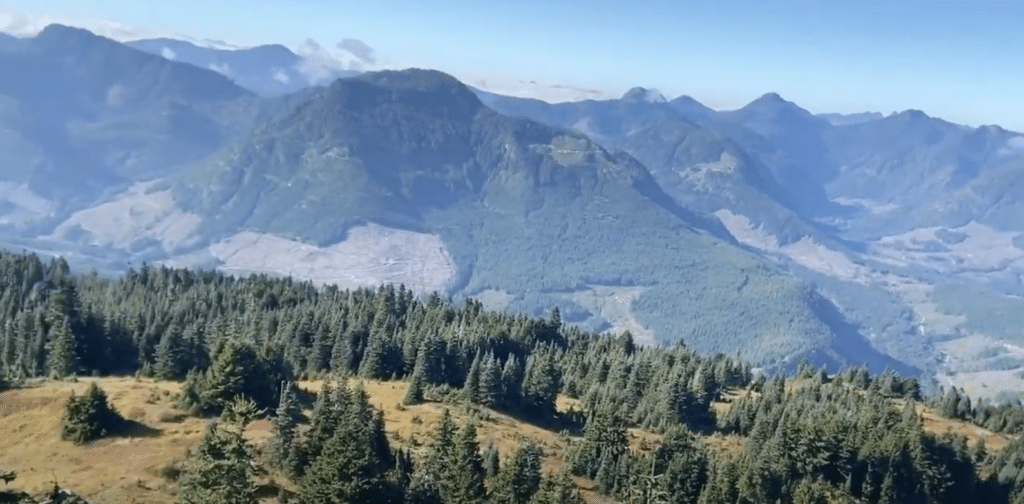
The area is designated as a Community Drinking Water Watershed in provincial mapping, which means it essentially “requires a higher degree of care” by the forestry company, says Sims. As for the risk of this specific land being sold and developed, Sims believes the possibility is “very remote,” though some logging, road building and tree planting is permitted in the area.
At present, Sims says the Nanaimo drinking watershed is managed and maintained jointly with Mosaic, and “focused on water quality along with forestry.” As Mosaic is owned by Canadian public service pension funds, Sims believes any imminent risk to that relationship such as a shift in ownership is unlikely due to their stated goals, which he describes as “long-term management of forestry for stable returns.”
How has logging affected other communities’ watersheds?
The challenge of how to protect community watersheds in the face of logging is not just limited to Nanaimo. For a long time, researchers have pointed out that clear-cut logging practices can affect drinking water quality and exacerbate climate change-induced flooding.
For example, years of intensive logging in the Okanagan region led to erosion and landslides in the watershed behind the town of Peachland in 2017, which “muddied the town’s water supply for months,” and prompted the construction of a $24 million water treatment plant, according to a 2021 Sierra Club report.
In the Comox Valley, TimberWest clear cut trees along a stream bank that feeds directly into the community’s water supply in 2008, though according to the Private Managed Forest Land Act (the laws that govern private forests) it should have left a buffer of trees along the creek standing.
After TimberWest was fined $35,000 for its actions, the company fought to have the fine rescinded and won, having successfully argued that its contractor “mistakenly believed” they could remove all of the trees, reported the (now shuttered) Comox Valley Echo. A full investigation into the clear cutting did not proceed until the nonprofit B.C. Tap Water Alliance stepped in more than a year later.
The underlying reason for many of these disputes is that while there are a series of regulations aimed at protecting drinking water, wildlife habitat and forest practices, there is no requirement to manage watersheds as a whole. This makes watershed areas, especially those owned by logging companies, vulnerable to the combined impacts from logging, recreation, development and climate change.
In January, B.C.’s forest watchdog, the Forest Practices Board, released a report outlining the need to facilitate watershed protection across the province — even in designated community watersheds. A significant number of complaints it has investigated relate to concerns about landslides and sediment runoff from heavy rain triggered by logging, even when forestry companies were compliant with existing laws.
The report’s primary findings were that there are not adequate opportunities for the public to be meaningfully involved in how forest practices affect watersheds. In addition, “there are no legal requirements to assess or consider cumulative effects of forest practices in most watersheds in B.C.” Even when combined effects from various activities were voluntarily considered, no one is responsible for managing them.
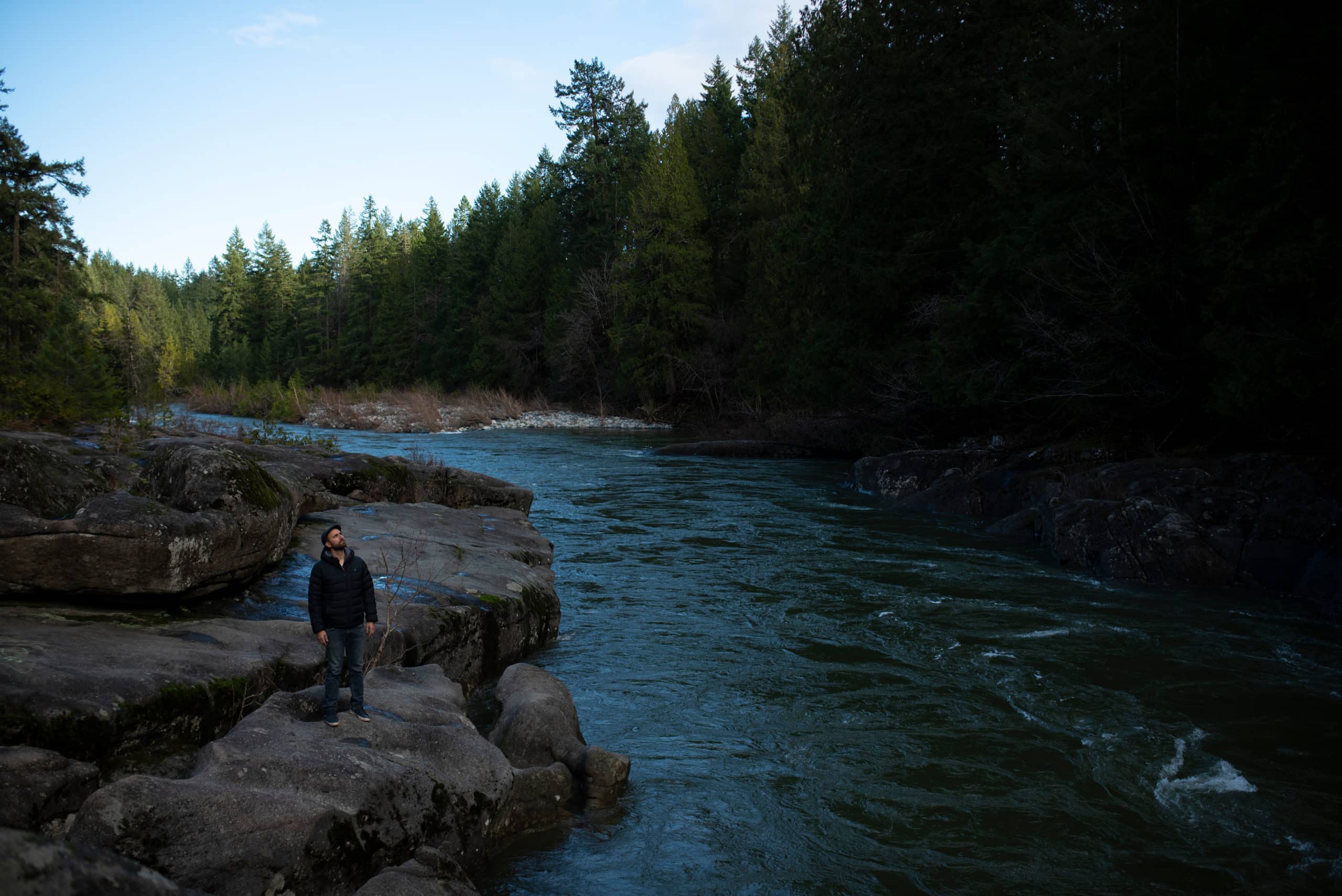
What does the City of Nanaimo have to say about watershed protection?
Unlike some watersheds which have multiple cities upstream, in Nanaimo’s “there is nothing upstream of our water source other than Pacific ocean-generated rainfall,” says Sims, a situation he describes as “extremely fortunate.”
The issue of community ownership of Nanaimo’s watershed surfaces every few years and is one he has “ruminated” on for decades, he adds.
“The question that comes to mind around community watershed ownership is: What is the net increase in benefit to the community that ownership would bring?” says Sims. When it comes to the protection of water quality, he concedes that public ownership may lead to a slight improvement, but notes that the city’s water quality is “already excellent,” with occasional turbidity issues due to extreme weather events.
“If the City owned the land, it would be responsible (and liable) for land and infrastructure management — security, forest fires, bridges and roads, pest control, reforestation etc. In other words, we would need to practise forestry, but perhaps without the income stream of harvesting. Is the community willing to pay the significant additional operational costs for this perceived benefit?”
As for the impact of logging within the watershed, Sims says he thinks heavy rains and runoff events have more of a negative impact on water quality, and that considering the city’s new filtration plant is state of the art, it is “able to handle raw water quality far worse than we’d ever expect to see.”
Many experts have connected the dots between clear cut logging and extreme flooding events, since vegetation absorbs and mediates water levels. Most recently the Forest Practices Board found that “more work is required for climate adaptation of forest practices that impact water.”
When asked about whether logging can actually be the cause of issues like turbidity, runoff and possibly landslides, Sims is careful with his words.
“I’m not going to say never. Yes, it does—but. There’s a big ‘but’ in there,” he says. Of the “huge area” that comprises Nanaimo’s drinking water watershed, Mosaic logs approximately “a few hectares a year” and within this, there are cut blocks “where most of the trees are removed,” he adds. “But they’re relatively small. It’s not like whole mountainsides.”
In a fact sheet distributed by Mosaic related to their most recent logging in the Red Gate area, the company states that the buffers and areas of retention along the river corridor “far exceed riparian regulation.”
When asked for an audit report that shows this, the company responded via email that an internal professional biologist and “several professional foresters” had reviewed the area to provide input and adjustments, and that an “external professional biologist” confirmed that the riparian protections exceeded regulations. Mosaic did not clarify who the external biologist was or what company they are employed by.

While Sims questions whether ownership is worth the price tag, some communities like the Municipality of North Cowichan have found ways to successfully manage forests themselves, by harvesting trees from some areas to generate revenue to fund the protection of other areas. But it’s worth noting that the municipality only acquired these forests because the forestry companies that owned and logged the land stopped paying municipal taxes, The Discourse reports.
The issue of maintenance and staffing is also a valid concern. As University of British Columbia researcher Patrick Bell’s report on watershed protection in private lands held by logging companies shows, management of the Capital Regional District’s multiple watersheds requires an entire department and dozens of employees dedicated to its protection.
The report also notes that “compared to the construction of costly filtration infrastructure, proactive watershed protection is a relatively inexpensive alternative to filtration and provides myriad other benefits, such as carbon sequestration and biodiversity conservation.”
How to ensure the future of Nanaimo’s watershed
“The bottom line for me is, that land should be in the hands of Snuneymuxw,” says Manly. “Everything that I’ve done has been around making sure that they are recognized as the rightful owners of this territory, and that they should be the stewards of the land.” (Representatives from Snuneymuxw First Nation did not respond to a request for comment).
One way that can potentially happen, he argues — along with a number of prominent Indigenous leaders in Canada — is through a relatively new federal initiative seeking to establish what are known as Indigenous Protected and Conserved Areas (IPCAs), where Indigenous governments lead in conserving ecosystems using their own laws and knowledge.
Related: What are Indigenous Protected and Conserved Areas?
The recent Forest Practices Board report also calls on the province to increase involvement of First Nations.
A new strategy aimed at protecting watershed ecosystems was also announced by the province last month, with a focus on sustainable access to clean drinking water in face of climate crises like floods and droughts.
In a statement, George Heyman, Minister of Environment and Climate Change Strategy, expressed an intention to work with both Indigenous Nations and local governments.
The province is also asking members of the public to offer feedback on the related discussion paper that will inform a draft watershed security strategy to be released this fall, with a final strategy to be released next year.
One example of how the province can work with Indigenous nations and local stakeholders can be found in a recent partnership between the province and Cowichan Tribes to work together to create B.C.’s first comprehensive water sustainability plan for the Koksilah watershed. Driven by concerns about the effects of hotter summers and low snowpack on water levels, coupled with increased demand from development and agriculture, the partnership is one of a handful in the province that creates a new standard for watershed-level protection.
Locally, partly in response to resistance from the community around the logging of the Red Gate swimming hole, as well as previous recommendations made to protect the Nanaimo River watershed, Regional District of Nanaimo (RDN) directors Ben Geselbracht and Erin Hemmens recently presented a motion to study and identify land parcels along the river under impending ecological threat with high potential for conservation.
“Rather than waiting for urgent public appeals to intervene reactively when important recreational and ecological sites become inaccessible and degraded respectively; we must be proactive,” stated the Notice of Motion.
The end goal is to create a Nanaimo River park system for both the sake of ecological integrity and public access to recreation along the river, says Geselbracht, which may later serve as a template for protecting other watersheds within the RDN. [end]
This in-depth reporting was made possible thanks to generous readers who support this work.
Editor’s Note March 11, 2022: This article was updated to clarify that RDN committee members presented, not passed, a motion to council about the Nanaimo River watershed.

